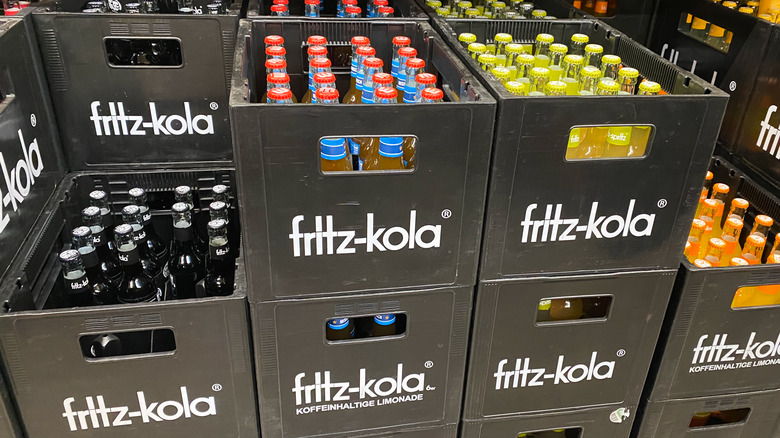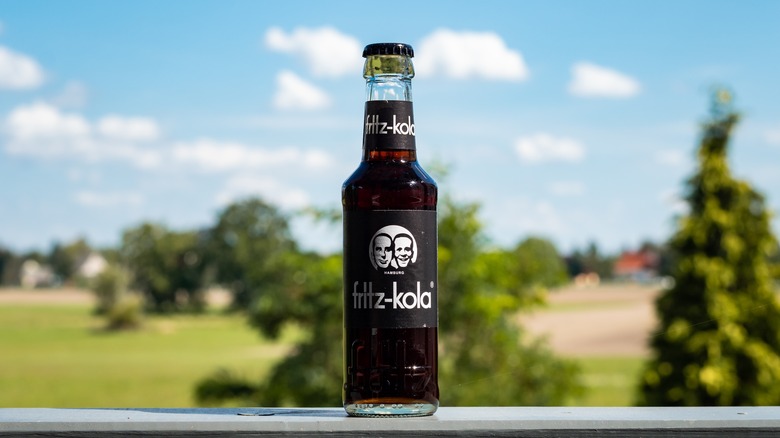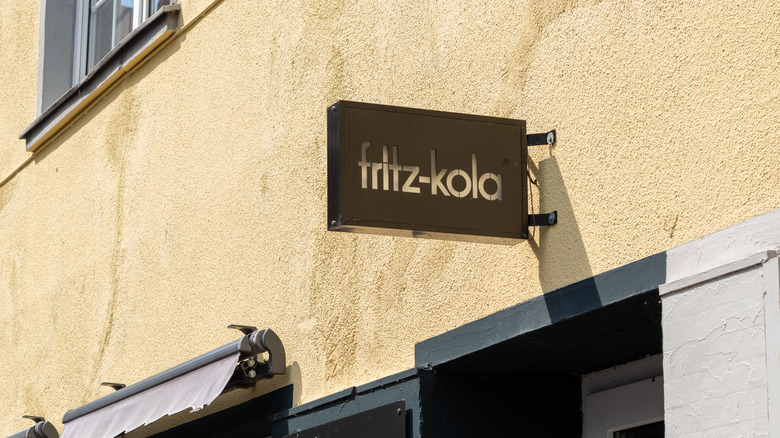What Makes Germany's Super Caffeinated Fritz-Kola Soda Unique?
The soda question used to be simple: Coke or Pepsi? No longer — while the big brands are unlikely to fade into obscurity anytime soon, an artisanal soda boom is on the rise. In fact, ReportLinker notes the market is expected to be worth $901.2 Million by 2028, with a 5.2% annual growth rate. With consumers favoring more natural ingredients and new flavors, there's room for more soda pop on the shelves.
Few cola companies attained a new segment of the market quite like Fritz-kola. Known for its low sugar content, all-natural ingredients, and saturated caffeine content, the brand cemented itself as a popular option during a night out. Fritz-kola's approach to soda is all about simplicity. Don't expect quirky flavors — but rather a refreshing pop that goes down easy. It can be mixed into cocktails or enjoyed on its own. With direct branding and an environmentally-minded ethos, it's a drink that's easy to root for. Let's dive into what it's all about.
History of Frtiz-kola
The beverage arose from humble origins in 2002. Two childhood friends, Mirco Wiegert and Lorenz Hampl, sought to create a less sugary, more caffeinated soda alternative. With no cola-making knowledge, they scoured the web for a recipe to no avail. So instead, they approached various breweries, hoping one would aid with their ambitions. After a long search, a small brewer from West Germany agreed to help, and they produced just over 4,000 bottles of the first soda batch.
After selling the drink door to door, they received enough funding for a second round. The company launched from their dorm room the subsequent year, with family and friends' garage space used as storage for expanded production. The duo also came up with their now iconic logo, which utilized their black and white portrait edited in Photoshop — a way to ease licensing costs. Over the next few years, the rapidly-expanding business released new flavors, like apple spritzer and lemon soda, all the while maintaining a no-frills approach to business. From the start, Fritz Kola eschewed cans, instead reaching for environmentally-minded options like glass bottles that were cleaned and reused. Their strong branding, aided by sports and music sponsorships, along with a youthful ethos, allowed them to enter a soda market that seemed impenetrable.
What's in Fritz-kola sodas?
The soda's most infamous quality is its caffeine content — at the legal limit of 25 milligrams per 100 milliliters, which is two and a half times greater than a Coca-Cola, per BBC. The caffeine is naturally derived from a green coffee bean extract and mixed into a mineral water base. The sugar in the soda is made from beetroots, and the cola flavor is derived from a kola nut. Only a couple of additional components — colorant sulfite ammonia caramel and stabilizer phosphoric acid round up the succinct list of ingredients.
Since the onset of the company, Fritz-kola has gone on to release a myriad of other sodas. The classic cola flavor is now available in a sugar-less version. Additionally, they've expanded into soft drinks without caffeine, like lemonade and orangeade, as well as rhubarb and apple spritzers. Their line maintains a dedication to an uncomplicated, short list of ingredients, with the fruit drinks flavored with real juice. The company frequently experiments with other combinations, like a red edition with guarana — a fruit that offers an even more stimulating experience. And consumers with dietary restrictions have no fear; all of Fritz-kola's offerings are vegan.
Where to buy a Fritz-kola
Rather than challenging the ubiquity of big-brand sodas, Fritz-kola instead created a young, energetic appeal. Interlinked with partying, their first samples were given out alongside long nights of drinking — an attempt to make a caffeinating stimulant that's easier to down with booze. Such an aim is furthered with the packaging. Fritz-kola is only sold in small 200- or 300-ml bottles, not unlike glass beers. As a result, their distribution is focused on cafes, bars, and restaurants, lending the product a more artisanal feel.
In addition, the company puts funding into cultural pursuits, whether it's backing a mural project, aiding experimental bands, or sponsoring music festivals. The minimalist Fritz-kola logo is frequently spotted at vibrant social happenings — an aid to their image. So while it is available at grocery stores, Fritz-kola is most associated as a non-alcoholic option to keep the night going. Unfortunately, it's not sold in the U.S., so you'll need to be in Europe to join in on the caffeinating fun.



